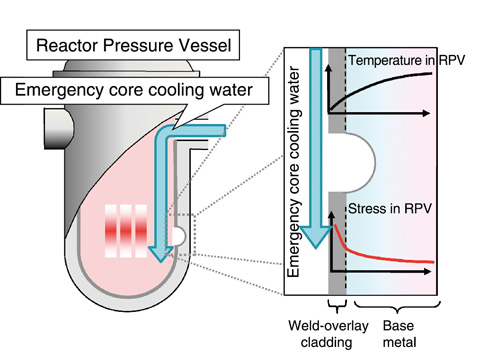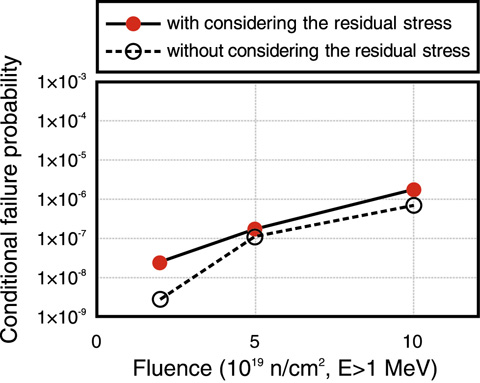
Fig.6-5 Pressurized thermal shock event in an RPV

Fig.6-6 Comparison of conditional failure probabilities with and without weld residual stress
For the safe operation of nuclear power plants, the structural integrity of reactor pressure vessels (RPVs), regardless of the situation, has to be maintained. RPVs composed of low alloy steel with a thickness of approximately 200 mm are exposed to neutron irradiation from the reactor core. Therefore, it is necessary to ensure the structural integrity of RPVs while considering neutron irradiation embrittlement associated with decrease in the fracture toughness and the occurrence of reactor transients that subject the vessel to severe thermal shock as well as the normal pressure loading conditions. Pressurized thermal shock (PTS) is one of the most severe events that increases the possibility of failure of the RPV in a pressurized water reactor (Fig.6-5). PTS, which is characterized by rapid cooling of the inner surface of the RPV due to injection of emergency core cooling water that causes high tensile stress in the inner surface, has the most significant impact on the integrity of the RPV. PTS analysis is performed as a series of sequential steps with a postulated crack at the inner surface in order to identify the margins against failure.
There are two analytical approaches for PTS events: deterministic and probabilistic fracture mechanics (PFM) methods. Safety factors and/or margins are used for the deterministic approach in order to conservatively assess the structural integrity of an RPV. For the PFM approach, the uncertainties in the material properties of the structural components, the distribution of the flaw sizes, among other factors are incorporated into the analysis. The PFM analysis code PASCAL developed by the JAEA can evaluate the conditional probabilities of crack initiation and failure in an RPV under PTS events. We have updated PASCAL to version 3 (PASCAL3) in order to reflect the latest findings, such as the residual stress effect due to welding. Fig.6-6 shows the conditional failure probabilities of an RPV as a function of the fast neutron fluence with and without the residual stress caused by the weld-overlay cladding. The results show that consideration of the weld residual stress increases the conditional failure probability. We continue to work to improve the accuracy of structural integrity assessments by applying advanced analytical methods and the PFM approach.
This study was sponsored by The Secretariat of the Nuclear Regulation Authority (former Nuclear and Industrial Safety Agency, the Ministry of Economy, Trade and Industry of Japan).